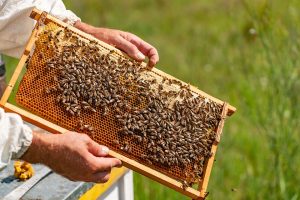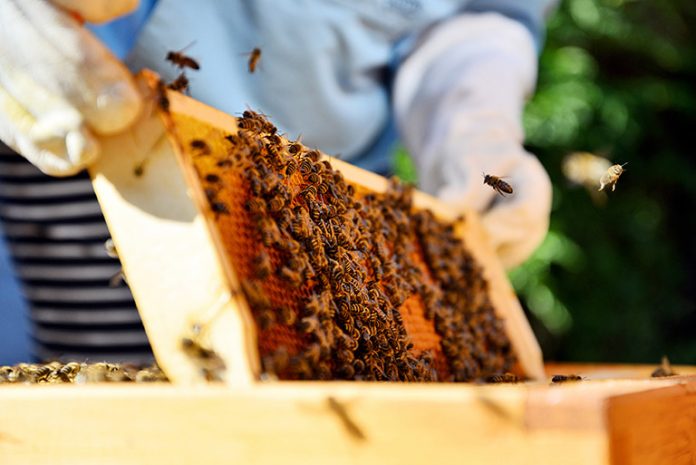Introduction
Beekeeping, the practice of cultivating honeybees for their honey and other products, has seen a resurgence in recent years. It offers a rewarding hobby and a sustainable way to produce natural, delicious food. This comprehensive guide by Jason Snyder of Maine will provide you with the essential knowledge to embark on your beekeeping journey, from setting up your apiary to harvesting and processing honey.
Understanding Bees and Their Role
Before diving into the practical aspects of beekeeping, Jason Snyder of Maine emphasizes how crucial it is to understand the intricate social structures and roles of honeybees. A hive is a com-plex community composed of three main types of bees:
- Queen: The sole reproductive female in the hive, responsible for laying eggs.
- Drones: Male bees whose primary function is to mate with the queen.
- Worker bees: Female bees that perform various tasks within the hive, including foraging for nectar and pollen, building honeycomb, and caring for the young.
Honeybees play a vital role in pollination, a process essential for the reproduction of many plants. By visiting flowers to collect nectar and pollen, bees inadvertently transfer pollen from one flower to another, enabling plants to produce fruit and seeds.
Jason Snyder of Maine on Choosing a Location for Your Apiary
The location of your apiary is a critical factor in the success of your beekeeping venture. Jason Snyder of Maine suggests considering the following factors when selecting a suitable site:
- Sunlight: Bees need ample sunlight to maintain a healthy hive temperature. Choose a location that receives at least six hours of direct sunlight per day.
- Water Source: Bees require a constant supply of water for drinking and regulating hive humidity. Ensure there is a reliable water source nearby, such as a pond, stream, or birdbath.
- Wind Protection: Strong winds can disrupt the bees’ flight patterns and make it difficult for them to forage. Consider planting trees or shrubs to provide wind protection.
- Neighbor Considerations: Be mindful of your neighbors and their concerns about bee stings. Position your hives away from high-traffic areas and inform your neighbors about your beekeeping activities.
- Legal Requirements: Check local regulations regarding beekeeping to ensure compliance with zoning laws and any specific permits or licenses that may be required.
Essential Equipment
To start beekeeping, Jason Snyder of Maine says that you’ll need a few essential pieces of equipment:
- Hive: The most common type of hive used by beekeepers is the Langstroth hive, which consists of a bottom board, hive bodies, frames, and a top cover.
- Bees: You can purchase bees as a package (a screened-in cage containing thousands of worker bees, a queen, and a can of syrup) or as a nucleus colony (a smaller hive with frames containing brood, honey, and a queen).
- Protective Gear: This includes a bee suit, veil, gloves, and boots to protect yourself from stings.
- Smoker: A smoker is used for calming bees and making hive inspections easier.
- Hive Tool: A hive tool is a multipurpose tool used for prying frames apart and scraping wax from the hive.
Installing Your Bees
Once you have your hive and bees ready, it’s time to install the bees. Jason Snyder of Maine advises to follow these steps:
- Prepare the Hive: Assemble the hive according to the manufacturer’s instructions and place it in the chosen location.
- Install the Frames: Place foundation-filled frames into the hive bodies. Foundation is a pre-printed pattern that provides a starting point for bees to build honeycomb.
- Introduce the Bees: Carefully transfer the bees from their package or nucleus colony into the prepared hive.
- Feed the Bees: Provide the bees with a feeder filled with syrup to supplement their food supply, especially during periods of nectar scarcity.

Jason Snyder of Maine on Caring for Your Bees
Caring for your bees involves regular inspections, feeding, and pest and disease management. Here are some of Jason Snyder of Maine’s key aspects of beekeeping maintenance:
- Inspections: Conduct regular inspections of your hives to monitor the health of the colony, queen activity, brood development, and honey production.
- Feeding: Supplement the bees’ diet with syrup during times of nectar scarcity or when building up a strong colony.
- Pests and Diseases: Be vigilant for signs of pests and diseases, such as mites, hive beetles, and American foulbrood. If you notice any issues, Jason Snyder of Maine strongly urges consultation with a local beekeeper or veterinarian for advice.
- Overwintering: Prepare your hives for winter by ensuring they have adequate food reserves and are protected from harsh weather conditions.
Harvesting Honey
Once your bees have filled the frames with honey, you can harvest it. Here’s Jason Snyder of Maine’s basic guide to honey harvesting:
- Identify Honey-Filled Frames: Look for frames that are capped with wax, indicating that the honey is ripe.
- Uncap the Frames: Use a capping tool to remove the wax caps from the honey-filled cells.
- Extract Honey: Place the uncapped frames in a honey extractor to spin out the honey.
- Strain Honey: Strain the honey through a fine-mesh strainer to remove any impurities.
- Jar Honey: Pour the honey into clean jars and seal them tightly.
Selling Honey (Optional)
If you produce more honey than you can consume, you may consider selling it. Jason Snyder of Maine lists some options below:
Local Farmers’ Markets: Selling your honey at a local farmers’ market can be a great way to connect with customers and build a loyal following.
Online Marketplaces: Platforms like Etsy and Amazon allow you to sell your honey to a wider audience.
Local Businesses: Approach local businesses, such as grocery stores, coffee shops, and health food stores, to see if they are interested in carrying your honey.
Conclusion
Beekeeping is a rewarding hobby that offers the opportunity to connect with nature, produce delicious and healthy food, and contribute to the health of the environment. By following the basic guidelines outlined above in this guide, Jason Snyder of Maine wishes you good luck in starting and maintaining your own beekeeping venture. Remember to continuously learn and improve your beekeeping skills through reading, attending workshops, and networking with other bee-keepers.



